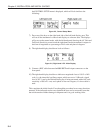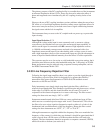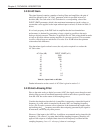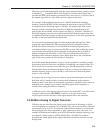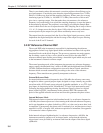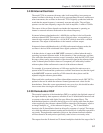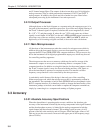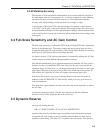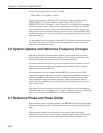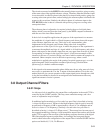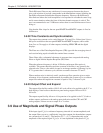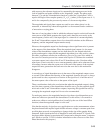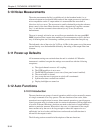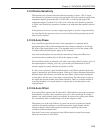
3-8
Chapter 3, TECHNICAL DESCRIPTION
and Y channel output filters. The outputs of these in turn drive two 16-bit digital to
analog converters (DACs) which generate the instrument’s FAST X and FAST Y
analog outputs. In addition, the signals are fed to further low-pass filters before
subsequent processing by the instrument’s host microprocessor.
3.2.10 Output Processor
Although shown on the block diagram as a separate entity, the output processor is in
fact part of the instrument’s main microprocessor. It provides more digital filtering of
the X and Y channel signals if required, calculates the vector magnitude, R, where
R = √(X
2
+ Y
2
) and phase angle, θ, where θ = tan
-1
(Y/X), and routes any of these
signals via two further 16-bit DACs to the unit’s CH1 and CH2 output connectors. It
also allows one of the two auxiliary analog inputs, ADC1 and ADC2, which are
digitized by a 16-bit analog to digital converter, to be used in ratio calculations.
3.2.11 Main Microprocessor
All functions of the instrument are under the control of a microprocessor which in
addition drives the front panel displays, processes front panel key operations and
supports the RS232 and GPIB (IEEE-488) computer interfaces. This processor also
drives the instrument’s 8-bit digital programmable output port, which may be used
for controlling auxiliary apparatus.
The microprocessor has access to memory which may be used for storage of the
instrument’s outputs as curves prior to transferring them to a computer via the
computer interfaces. In addition to using this function for the normal outputs, such as
the X and Y output signals, it may also be used with the auxiliary ADC inputs to
allow the instrument to operate as a transient recorder. The internal oscillator
frequency sweep function is also controlled by the microprocessor.
A particularly useful feature of the design is that only part of the controlling
firmware program code, which the microprocessor runs, is permanently resident in
the instrument. The remainder is held in flash EEPROM and can be updated via the
RS232 computer interface. It is therefore possible to change the functionality of the
instrument, perhaps to include a new feature or update the computer command set,
simply by connecting it to a computer and running an Update program.
3.3 Accuracy
3.3.01 Absolute Accuracy Specifications
When the demodulator is operating under correct conditions, the absolute gain
accuracy of the instrument is limited by the analog components in the signal channel,
and the absolute phase accuracy is limited by the analog components in both the
signal channel and the reference channel. The resulting typical accuracy is ±0.5
percent of the full-scale sensitivity and ±0.5 degree. When the higher values of AC
Gain are in use, the errors tend to increase in the upper part of the frequency range
(above 25 kHz).



